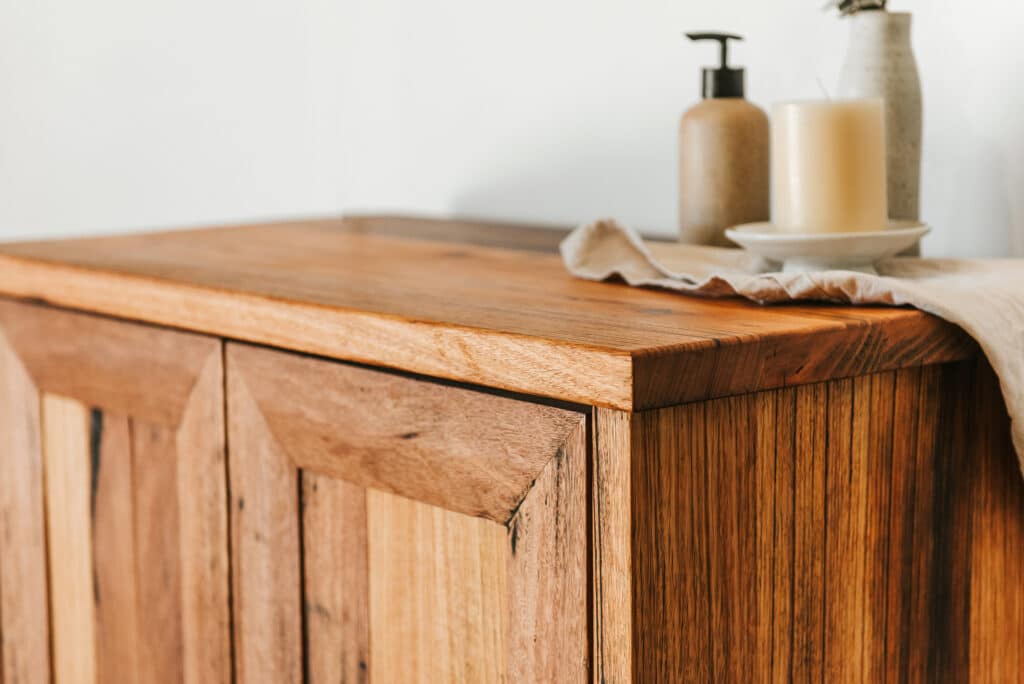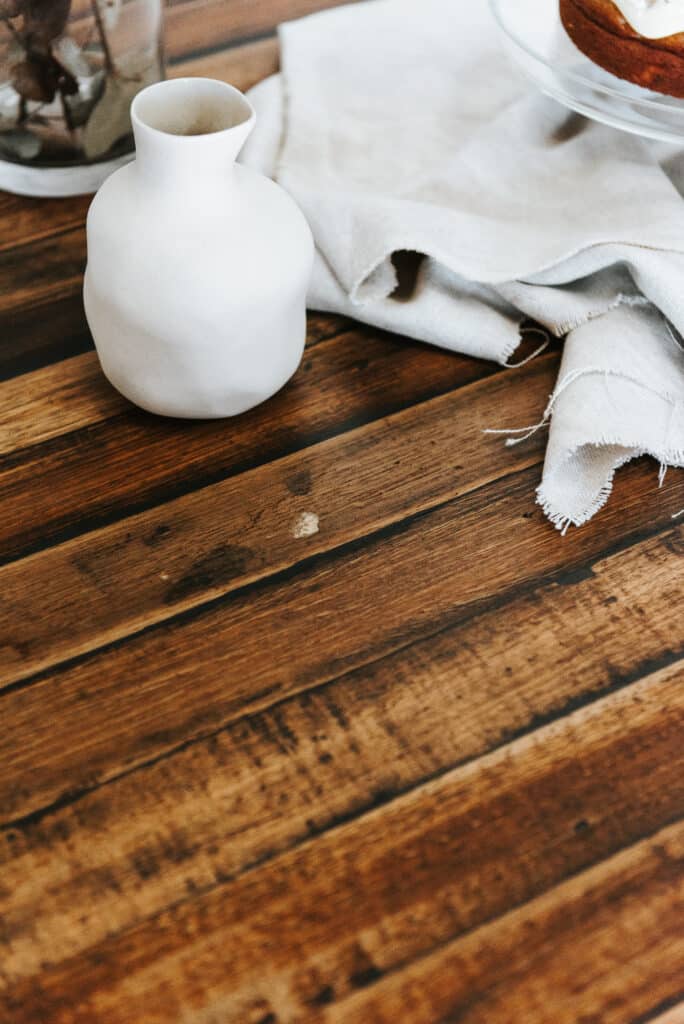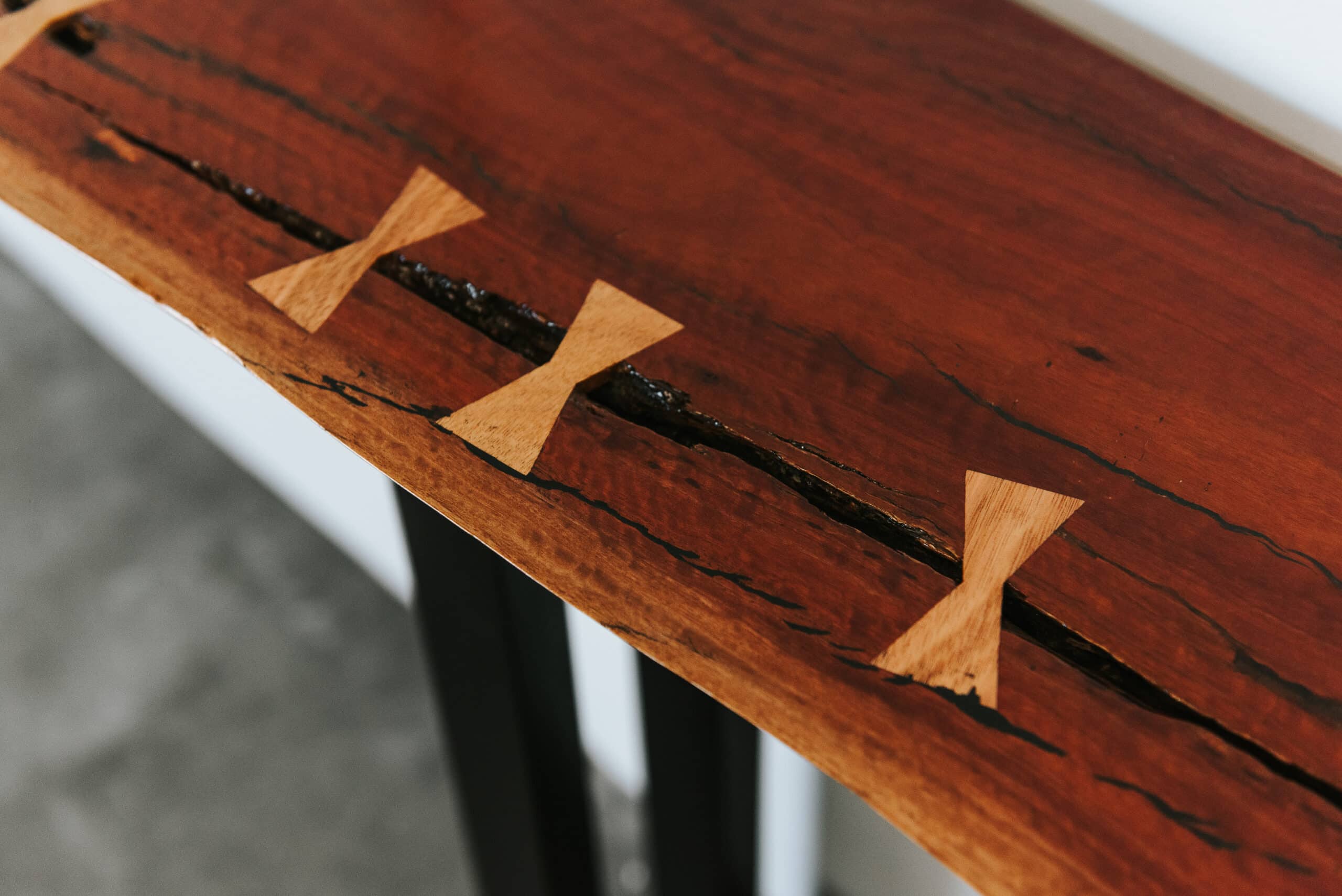RUBIO MONOCOAT
If your piece is finished with Rubio Monocoat, the following are some general care instructions:
General cleaning using a dry duster, small amounts of water, or Rubio’s recommended cleaner is the best way to maintain your piece. There’s no need to use extensive amounts of cleaners. In fact, only using the Rubio cleaner as regular cleaners can have solvents that damage the finish. Wipe up spills quickly and coasters are a great idea.
But don’t get the piece damp for the first 7 days after application, saturate the surface, use general cleaning products as they can damage the finish, and don’t leave standing water on the surface for extended periods. Rubio Monocoat recommends their Surface Care Spray.
Maintenance frequency varies and depends on use, care, and climate but on average is only required every 3 – 5 years. If the surface is in good condition, an application of ‘RENEW’ is all that may be required to rejuvenate your piece.

OSMO OIL
If your piece is finished with Osmo Oil, the following are general care instructions:
General cleaning using a dry duster, small amounts of water, or Osmo’s recommended cleaner is the best way to maintain your piece. There’s no need to use extensive amounts of cleaners on the piece as they may damage the finish. Osmo recommends their Wash and Care cleaner, and Liquid Wax Cleaners to maintain the finish as well as possible. Wipe up spills quickly and coasters are a great idea.
Osmo natural wood finishes can be easily renovated at any time most likely without the need for sanding. It may not even be necessary to re-finish the entire surface, but simply touch up damaged or faded areas.

VARNISH
General cleaning with a soft cloth will take care of most cleaning needs. Wipe up spills quickly and coasters are a great idea.
If a varnish finish deteriorates and starts to crack or flake, the surface will require sanding back to bare wood to re-coat which is a labor-intensive project. Instead, re-coat before the surface gets too worn out to save yourself some time and stress.
However, if the surface is re-coated while in good condition only light sand and cleaning are required before application.
How do you know when to re-coat? Look for patchiness on the surface and edges which are exposed to impact and the most use. If you do re-coat at this stage, simply sand back lightly, clean off dust, make sure the surface is dry, and re-apply the finish. Signs of cracking and flaking mean it’s time for full sand back before re-coating.
Also, don’t mix oil finishes with water-based ones as they’ll react badly to each other. In other words, if the piece is finished already in a water-based finish, use a water base varnish.


